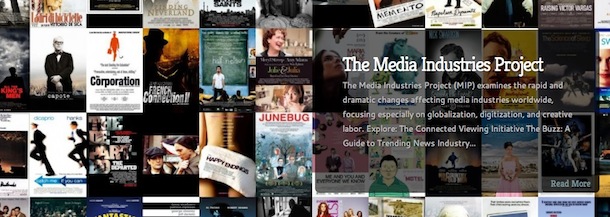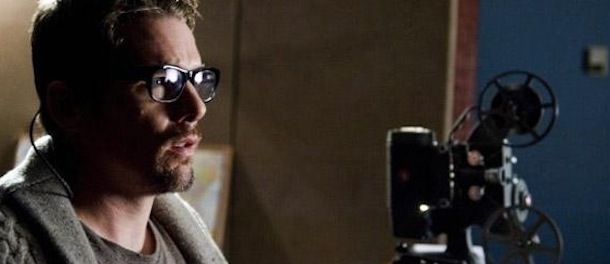An iconographic and text archive related to communication, technology and art.
In this link roundup: social media are populated with fake followers (or when reputation is based on quantity), Media Industries is a scholarly interest group doing research on everything media, a profil of young film critic Ignatiy Vishnevetsky, riots in Europe regarding austerity plans, Zygmunt Bauman on the choice between the public and the private, myths about mass murders, the digital restauration of Lawrence of Arabia, mass murders and media coverage, a 16 mm film about Günther Anders’s untranslated novel Die molussische Katakombe, technology and horror movies, groupies who have crushes on mass murderers, 70 mm screenings of Paul Thomas Anderson’s The Master are doing well (the audience is not tired of celluloid), in the U.S. suicide rate is double than the homicide rate and, finally, a new research suggests people are using their “mobile” devices… mostly at home.
• • •
-
Worldcrunch: “There’s no such thing as ‘viral’ – a foray into the world of fake friends” by Yves Eudes, Sept. 19, 2012. Read the original article in French over at Le Monde.
In the real world, Mars Kebab doesn’t exist, but that doesn’t keep it from having an excellent reputation on the web. Its promotional video has been viewed 105,000 times on YouTube, and it has more than 46,000 followers on Twitter. Only its Facebook page does not have many fans yet, only 578. But its “community manager” plans to attract 20,000 before long. Already, if you look up “Mars Kebab” on Google, you get thousands of results. The brand is mentioned everywhere, even in restaurant guides.
Mars Kebab is a real-life experiment by Parisian public relations agency Heaven, who wanted to demonstrate how easy it is to cheat and create an e-reputation out of the blue.
-
It is the aim of the Media Industries Scholarly Interest Group (MISIG) to stimulate and advance research and/or teaching relating to all aspects of media industries and institutions. (read more)
-
Los Angeles Times: “Who is Ignatiy Vishnevetsky?” by Steven Zeitchik, January 4, 2011.
It sounds like a tagline from a Coen brothers movie. And it may one day be. Today, however, it’s a legitimate question after the announcement that Vishnevetsky, a 24-year-old whose best-known gig to date is as a contributor for a site called Mubi.com, would be taking the vaunted co-host chair on “Roger Ebert Presents at the Movies.”
We caught up with the Russian-born, Midwestern-raised critic about his anointment as the heir apparent to the most influential broadcast critic in American history. Among the nuggets to emerge: Vishnevetsky dropped out of school (Columbia College in Chicago) after “a couple of semesters” ― mainly, he says, to watch three movies a day and teach himself cinema. To make ends meet, he has in the past few years taken on jobs like that of Laundromat attendant. -
Independent.ie: “Riots hit Athens as 50,000 take to streets in anti-austerity protest” by Renee Maltezou and Harry Papachristou, September 27, 2012.
Greek police have fired teargas at hooded youths hurling petrol bombs and stones as tens of thousands took to the streets in Greece’s biggest anti-austerity demonstration in months. The clashes occurred after more than 50,000 people marched to parliament chanting “We won’t submit to the troika” and “EU, IMF Out!” on a day of strikes against a new round of cuts demanded by EU and IMF lenders.
-
Public Intelligence: “Madrid and Athens Anti-Austerity Protest Photos September 2012” September 30, 2012. Photo below: Protesters gather close to Spain’s Parliament during a demonstration in Madrid, September 25, 2012. Police prepared on Tuesday for anti-austerity demonstrations in Spain’s capital ahead of the government’s tough 2013 budget that will cut into social services as the country teeters on the brink of a bailout. REUTERS/Sergio Perez.
-
Social Europe Journal: “On Never Being Alone Again” by Zygmunt Bauman, June 28, 2011.
And let me add: the choice between the public and the private is slipping out of people’s hands, with the people’s enthusiastic cooperation and deafening applause. A present-day Etienne de la Boétie would be probably tempted to speak not of voluntary, but a DIY servitude…
-
Oxford University Press’s blog: “The seven myths of mass murder” by J. Reid Meloy, Ph. D. September 28, 2012.
For the past 15 years my colleagues and I have conducted research on mass murder, the intentional killing of three or more individuals, excluding the perpetrator, during one event. Recent cases of mass murder have pointed to misconceptions about this rare and frightening act, and I would like to shed some light on what I consider the seven myths of mass murder.
It is rare to find accurate assessments about mass murders since they are often clouded with exaggerations and/or unfounded assumptions. This short post is a good start in trying to understand those events.
-
The New York Times: “‘Lawrence of Arabia,’ Mended, Returns to Screen and Blu-ray” by Fred Kaplan, September 28, 2012.
But the film holds up not only for its historical parallels but also because it’s thrilling and, in its present incarnation, it looks breathtaking.
The key is that this is a 4K digital restoration. When a machine called the Imagica EX scans across each frame of a film’s negative, it creates a digitally encoded replica that consists of 4,000 (actually, 4,096) pixels on each horizontal line. Multiplied by the 2,160 pixels on each vertical line, this makes for a total of 8.8 million pixels per frame.
By comparison, high-definition TV broadcasts and Blu-ray Discs are made from scans of 2.2 million pixels per frame. In other words, 4K images have four times as much detail and resolution as HD or Blu-ray.
-
Media Matters for America: “Rampage Nation: When A Gun Massacre Isn’t Even Big News” by Eric Boehlert, October 1st, 2012.
Incredibly, that mass murder story wasn’t considered to be especially newsworthy by major news organizations. The shockingly small amount of press coverage the story has received (the New York Times has printed just two clipped AP reports on the shooting, buried in Section A and totaling less than 500 words) highlights the shoulder-shrugging response so many gun rampages now generate inside national newsrooms.
The fact is major news organizations provide disproportionate coverage for the most spectacular cases while ignoring more “common” cases (usually, mass murders involving a family). According to thorough research by Grant Duwe published in 2007, there’s an average of two mass murders perpetrated each month in the United-States alone (see Mass Murder in the United Sates, p. 16). See also his paper “A Circle of Distortion: The Social Construction of Mass Murder in the United States” (2005).
-
MUBI.com: “A Land Imagined: A Conversation with Nicolas Rey” by Daniel Kasman, October 4, 2012.
The most mysterious encounter I had at the Toronto International Film Festival was with Nicolas Rey’s differently, Molussia, a 16mm feature film in the Wavelengths section that will be playing at the New York Film Festival in its Views from the Avant-Garde sidebar. The film adapts a book by German philosopher Günther Anders that the filmmaker has never read. In truth, the mystery is probably in the echoing series of encounters within the film, not just mine created by watching it. Rey, widely familiar with Anders’ philosophical writings, only had second hand access to the book upon which his film was based, the novel “The Molussian Catacomb”, written in the 1930s, which takes the form of a dialog between two citizens of an imaginary fascist country, Molussia, which has striking similarities to the contemporary Germany of the time.
-
Slate: “The new—and very scary—use of found footage in the horror movies V/H/S and Sinister” by Jason Bailey, Oct. 4, 2012.
What gives the device an extra kick in these new films is their attentiveness to technological detail. The films within V/H/S and Sinister just look real. The former begins with a bright blue screen, the big blocky PLAY text in the upper left, and the tracking lines and audio drops familiar from that seemingly ancient home-video technology. The accuracy of those glitches, as well as the off-handed naturalness of the acting, give the picture authenticity; it’s hard to pinpoint why, but most of the film feels “captured” in a way that faux found-footage movies seldom do.
-
The Awl: “The Killer Crush: The Horror Of Teen Girls, From Columbiners To Beliebers” by Rachel Monroe, October 5, 2012.
A week or so after James Holmes shot up an Aurora, Colorado, movie theater, the internet was shocked (shocked) to discover that teenage girls on Tumblr were declaring their love for him. The members of this internet clique called themselves Holmies, and incessantly re-posted the same sullen pictures of Holmes with captions like “I WANT TO CUDDLE HIM UNTIL HE SUFFOCATES” and “I want to feed him a tuna fish sandwich. with. mayonnaise.” The internet treated this as though it were a new phenomenon, but the Holmies were just an offshoot of the already-existing Tumblr worlds of girls who crush, hard, on killers. Ted Bundy, Richard Ramirez, and Charles Manson all have their groupies, but the widest and most prolific group seems to be the Columbiners, who have devoted themselves to Columbine shooters Eric Harris and Dylan Klebold.
-
FirstShowing.net: “I Love This Photo – The Master in 70mm at New York’s Village East” by Alex Billington, September 17, 2012.
This is the way it should be happening. He has captured the awe of event movies again, the beauty of 70mm being the reason people are lining up; the projection, the experience. Look at that. Amazing. It’s paying off too – The Weinstein Company is raking in the cash, as The Master has been earning a per-theater-average of about 146K so far, topping Moonrise Kingdom and all others.
-
CDC.gov: “National Vital Statistics Reports. Death: Preliminary Data for 2010” [PDF] January 11, 2012.
See Table 2 on page 20: in 2010, there was a rate of 12.2 suicides for every 100,000 population. In comparison, the rate for homicide was 5.2 for the same year.
-
Digiday.com: “Why Mobile’s Often Not About Mobility” by Josh Sternberg, October 3, 2012.
New research from AOL and BBDO challenges conventional wisdom that mobile is all about utility-on-the-go. After all, 68 percent of people use their smartphone at home. The study, conducted by research firm InsightsNow, found that nearly half of smartphone use is for “me time,” ie, vegging on the couch. Additionally, 70 percent of this behavior is during lean-back experiences, like watching television.
- By Philippe Theophanidis
- on
- ― Published in Link-roundup










